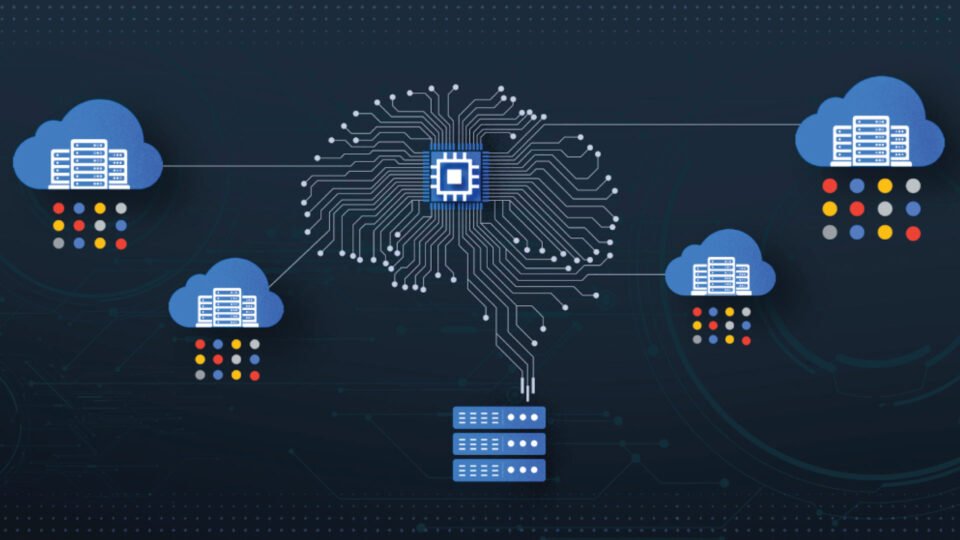The “Cloud Computing Platform Market by Service Model (IaaS, PaaS, and SaaS), by Deployment Model, Organization Size, Vertical (BFSI, Retail and Consumer Goods, Telecommunications, IT and ITeS, and Manufacturing), and Region – Global Forecast to 2027″ report has been added to ResearchAndMarkets.com’s offering.
The global cloud computing platform market size is expected to grow from USD 545.8 billion in 2022 to USD 1240.9 billion by 2027 at a Compound Annual Growth Rate (CAGR) of 17.9% during the forecast period. Cloud computing is an on-demand delivery of a virtual environment that includes a pool of resources, such as computing, storage, applications, database, and network, through pay-as-you-go pricing service models, which enable enterprises to host their workloads.
As per the service model, IaaS to grow at the highest CAGR during the forecast period
As per the service model, Infrastructure as a service (IaaS) is estimated to hold the highest Compound Annual Growth Rate (CAGR) of 22.5% in the cloud computing platform market. Cloud Computing Service Models are further categorized into IaaS, PaaS, and SaaS. IaaS, or Infrastructure as a service, is a type of cloud computing that offers basic computation, network, and storage capabilities to customers on demand, via the internet, and on a pay-as-you-go basis. It describes a set of services, including hosting, provisioning, hardware, and the fundamental ones required to run a cloud.
With this, an enterprise can use this service to outsource servers, storage, hardware, servers, and networking components, as well as other equipment needed to support operations. Further, PaaS, or platform as a service, is an all-inclusive environment for cloud development and deployment that has the tools necessary to provide anything from basic cloud-based apps to complex business systems. It consists of application infrastructures (middleware) services, such as application platforms, development tools, integration, business process management, Business Analytics/BI, and database management services. SaaS refers to a cloud-based method of providing software to users. Users subscribe to an application rather than purchasing it once and installing it. Users can log into and use a SaaS application from any compatible device over the internet. The actual application runs in cloud servers instead of each user installing the software on their device. For large organizations, updating software was a time-consuming process.
As per platform as a service, analytics and reporting segments to grow at the highest CAGR during the forecast period
As per PaaS, Analytics and reporting are anticipated to develop at the highest CAGR of 23.4% during the forecast period, while the data management segment is expected to hold a larger market share based on platform-as-a-service. Analytics and reporting are data management solutions implemented in organizations to collect historical and present data while using statistics and software to analyze raw information and deliver insights for making better future decisions. BI is the process of collecting, storing, and analyzing data from business operations. It provides comprehensive business metrics in near-real-time to support better decision-making.
As per software as a service, the supply chain management segment is expected to grow at the highest CAGR during the forecast period
As per SaaS, supply chain management is estimated to hold the highest Compound Annual Growth Rate (CAGR) of 17.6% in the cloud computing platform market. Applications, such as logistics, inventory, and production planning, are covered under the SCM segment. Improving supply chain operations for different capital-intensive industries requires explicit consideration, as the multidisciplinary nature of different sectors makes SCM practices more complex. Cloud-based SCM applications help to reduce all these challenges and improve the business processes associated with managing supply chain activities.
Market Dynamics
Drivers
- Increased Adoption of Cloud Computing Services Due to COVID-19
- Rising Demand for AI
- Personalized Customer Experience
- Need for Disaster Recovery and Contingency Plans
Restraints
- Data Security and Privacy Concerns
- Lack of Technical Knowledge and Expertise
Opportunities
- Increasing Government Initiatives
- Adoption of IoT and Connected Devices
Challenges
- High Complexity Due to Adoption of Multi-Cloud Model
- Risk of Vendor Lock-In
Key Topics Covered:
1 Introduction
2 Research Methodology
3 Executive Summary
4 Premium Insights
5 Market Overview and Industry Trends
6 Cloud Computing Platform Market, by Service Model
7 Cloud Computing Platform Market, by IaaS
8 Cloud Computing Platform Market, by PaaS
9 Cloud Computing Platform Market, by SaaS
10 Cloud Computing Platform Market, by Deployment Model
11 Cloud Computing Platform Market, by Organization Size
12 Cloud Computing Market, by Vertical
13 Cloud Computing Platform Market, by Region
14 Competitive Landscape
15 Company Profiles
16 Adjacent/Related Markets
17 Appendix
Companies Mentioned
- Adobe
- Alibaba Cloud
- App Maisters Inc.
- AWS
- Bluelock
- Box
- Centurylink
- Cisco
- Citrix
- Cloudflex
- Cloudhelix
- Cloudways
- Digitalocean
- DXC
- Epicor
- Fujitsu
- IBM
- IFS
- Infor
- Intuit
- JDV Technologies
- Joyent
- Microsoft
- Navisite
- NEC
- Opentext
- Oracle
- OVH
- Pcloud
- Rackspace
- Sage
- Salesforce
- SAP
- Servicenow
- Skytap
- Tencent Cloud
- Tudip Technologies
- Upland Software
- Virtustream
- Visartech
- Vmware
- Vultr
- Workday
- Zoho
- Zymr
Visit AITechPark for cutting-edge Tech Trends around AI, ML, Cybersecurity, along with AITech News, and timely updates from industry professionals!

